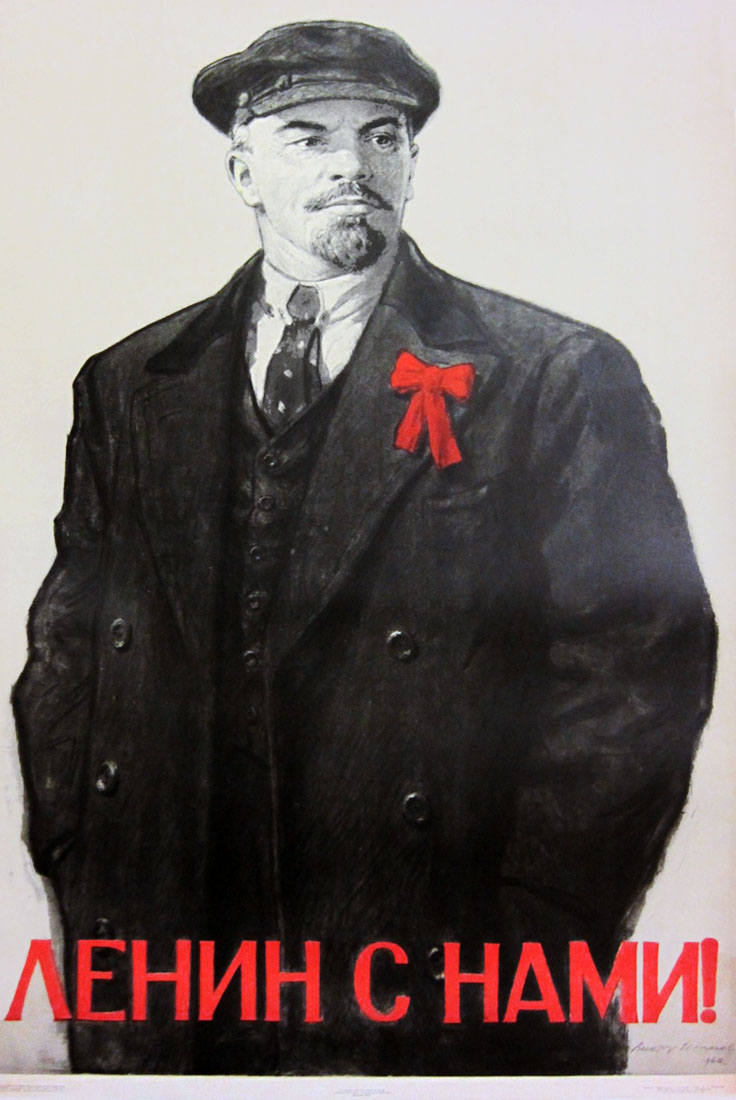
¡Lenin está con nosotros!
Número de Cartel: PP 823
Categoría: Lenin
Información sobre el cartel: 821
Tamaño: Please inquire
Tipo de cartel: Offset
Fecha de publicación: 1961
Editores: Editor M. Sergeeva
Información técnica: [Approved] January 24, 1961; Publication No 1-642, Size 1 sheet, Order No. 1418, Price 10 kopeks
Ediciones: 100,000
Número de Glavlit: A01522
En el catologo: PP 823 Lenin
Artista: Ivanov, Viktor Semenovich — Иванов, Виктор Семёнович
Viktor Semenovich Ivanov attended Moscow Secondary Professional Art School from 1926 to 1929. In 1928, he took classes at a studio of Dmitrii Kardovskii the Russian artist, illustrator and stage designer, and from 1929 to 1933, Ivanov continued his education at the Institute of Painting, Sculpture and Architecture that was affiliated with the Russian Academy of Arts of Leningrad. In 1931, Viktor Ivanov began designing for the state publishing house Ogiz-Izogiz where he achieved acclaim as a prolific artist whose concentration ...
Leer más...
Imprenta: 1st Exemplary Typography Workshop named for A. A. Zhdanov, Moscow — 1-я Образцовая типография им. А.А. Жданова
The 1st Exemplary Typography Workshop was named in honor of Andrei Alexandrovich Zhdanov (1896-1948), a Soviet military leader and a senior member of the Politburo who died in 1948. Reportedly, Andrei Zhdanov controlled the atomic espionage division of the USSR and he was Josef Stalin's closest confidant. Historically, the 1st Exemplary Typography Workshop began as the Sharapov-Sytin Partnerhip, a printing workshop formed before the Russian Revolution. Ivan Dmitrievich Sytin (1851-1934) was the son of a peasant. ...
Leer más...
Editorial: IzoGiz (State Publishing House of Fine Art), Moscow — Изогиз (Государственное издательство изобразительного искусства), Москва
The history of IzoGiz begins with the formation of Ogiz, the Association of the State Book and Magazine Publishers. In 1930, the Sovnarkom of the Russian Socialist Federative Soviet Republic established Ogiz to centralize publishing under a monopoly in order to eliminate duplication of printed material, to streamline and control publishing production and its output, and to create a base for marketing books, training and technical manuals. In 1931, the Central Committee of the USSR ordered certain ...
Leer más...